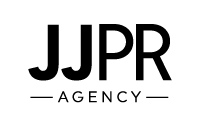Dear Clients and Friends,
Because the Coronavirus crisis has created a frenzy for businesses just like us across the country, we’ve had lots of questions from fellow business owners on best practices and how to effectively message not only during the crisis, but also to maintain business operations and keep revenue flowing. Here are 8 things to consider as you plan and navigate your business’s communications during this unprecedented time:
1. Create a COVID-19 advisory team
- Gather a team that includes people from various functions across your business to assess your needs and risks (What emergencies should you plan for? What cleanliness protocols are in place? Is staff increasing cleaning and disinfection of touch surfaces?
- Determine the task force’s role and a decision-making structure
- Assign a key spokesperson(s) for your company who will communicate with all audiences, including internally with employees and externally with media, investors, customers, vendors, etc.
- Agree internally about what will be communicated before any announcements are made to ensure consistent messaging
2. Implement a system for monitoring updates daily, hourly and for emergency information
- Assign team members to monitor communication updates and travel advisories from leading authorities in your industry, public health organizations, etc.
3. Develop contingency plans for each of your audiences and organizational functions
- Should an outbreak occur near/in your business, what should happen? Who will make decisions? Who should be informed and by what methods? What messages should they hear? What is the process for providing updates and how often?
4. Create a communications plan
- After reviewing each of your audiences’ needs, who are the key stakeholders who will need information from your organization? What information do they need and for what purpose?
- Develop messaging and communication strategies for each audience, and assign a lead. What communication tools will you need? How will you communicate with each audience (text, email, website, social media)? Have emergency communications systems and tools been tested? Ensure the tone of all messaging is calm, reasonable and thoughtful.
5. Develop a human resources plan
- Explore processes and guidance if employees need to work from home, and review telecommuting policies and accountability.
- Communicate with your employees regularly, and prepare and share statements through internal channels. Educate employees about the virus, why you are taking these measures, and of any ongoing developments.
6. Communicate with customers regularly
- Develop messaging to assure customers of actions your business has taken to ensure delivery of products and services they need. Communicate if there are delays in processes, timing, etc. Also reinforce measures your business has taken to deliver products and services to protect them and your own employees from exposure.
- Consider an FAQ fact sheet with questions your customers may ask and post to your website.
- Maintain regular, open lines of communication with customers with updated information and once things return to business as usual.
7. Prepare for media inquiries
- Create statements for the news media as they relate to COVID-19. Be considerate of timing and avoid sending non-critical company news releases (product launches, events, etc.). Also be sensitive to messaging on social media.
- Consider possible questions you may be asked by media on production capacity, temporary shutdowns, cooperation with other organizations, procedures for various scenarios, how long it will take for your organization to return to normal operations, and what actions you have taken to assure the safety of your employees and customers.
- Recommended messaging for businesses should be only to discuss policies as they relate to the outbreak, their internal communication to employees on staying healthy, and how you are working to meet daily customer needs throughout the crisis.
8. Measure effectiveness and plan for the future
- Monitor the effectiveness of your communication to various audiences.
- Evaluate your business practices and how you will sustain them should there be an extended plan to shut down/isolate the issue or should the virus return later this year.
We are hopeful that your business operations and employees will not be impacted.
Best regards,
JJPR







